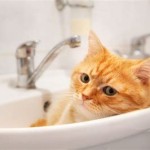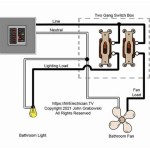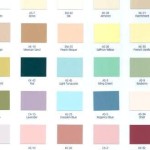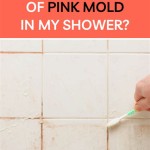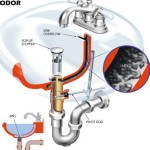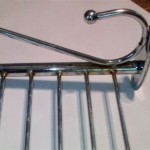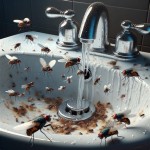Tiny Brown Bugs in Bathroom Sink Drain: Identification and Solutions
The discovery of tiny brown bugs in your bathroom sink drain can be unsettling. These small creatures, often referred to as drain flies, are a common household pest that thrives in damp, organic-rich environments. Understanding their characteristics, habits, and preferred breeding grounds is crucial for effectively addressing an infestation. This article provides a comprehensive guide to identifying these insects, explaining their life cycle, and offering practical solutions to eliminate them.
Identifying the Culprit: Drain Flies
Drain flies, also known as moth flies or sewer flies, are small, delicate insects with fuzzy, brown bodies that resemble miniature moths. They typically measure 1/8 to 1/4 inch in length, making them easily overlooked. One distinguishing feature is their distinctive wing pattern, which often appears fringed or hairy. While their color can vary from grey to brown, the brown color is often predominant.
Drain flies are attracted to moist environments and feed on organic matter, which is often present in bathroom sink drains. Their larvae thrive in slime and biofilm that accumulates in drains, feeding on decaying matter, bacteria, and fungi. This makes bathroom sink drains an ideal breeding ground for these insects.
Life Cycle of Drain Flies
The life cycle of drain flies includes four stages: egg, larva, pupa, and adult. The female drain fly lays eggs in moist organic matter within a drain. These eggs hatch into larvae, which are small, worm-like creatures that feed on decaying organic materials. Once the larvae mature, they transform into pupae, a resting stage where they undergo metamorphosis. Finally, adult drain flies emerge from the pupae, ready to mate and lay eggs, perpetuating the cycle.
The entire life cycle of a drain fly can be completed in as little as two weeks, allowing for rapid population growth. This rapid reproduction rate makes addressing a drain fly infestation crucial.
Causes of Drain Fly Infestations
Several factors contribute to the development of drain fly infestations:
1. Organic Waste Accumulation
The primary cause of drain fly infestations is the accumulation of organic waste in drains. Hair, soap scum, toothpaste, and other organic debris provide a perfect breeding ground for drain flies. Over time, this organic matter decomposes and attracts drain flies, creating a breeding ground for their larvae.
2. Poor Drainage
Poorly draining sinks can trap water and create a moist environment ideal for drain flies. Slow-draining sinks allow organic materials to linger, providing a breeding ground for the insects and their larvae.
3. Lack of Cleaning
Regular cleaning of bathroom sink drains is essential to prevent drain fly infestations. Neglecting drain cleaning allows organic matter to accumulate, creating a breeding ground for these insects.
Preventing and Eliminating Drain Flies
Addressing a drain fly infestation requires a two-pronged approach: prevention and elimination.
1. Prevention
Preventing drain fly infestations requires maintaining a clean and dry bathroom environment, particularly focusing on the sink drain. This can be achieved through regular cleaning and ensuring proper drainage.
2. Elimination
Eliminating existing drain fly infestations involves targeting both the adult flies and their larvae. Here are some effective methods:
A. Drain Cleaning: Regular cleaning of the drain with a mixture of baking soda and vinegar can help remove organic matter and remove any existing larvae. Pouring boiling water down the drain can also help kill larvae and remove organic matter.
B. Chemical Insecticides: Commercial drain fly insecticides are available in liquid, spray, and powder forms. These products are designed to kill adult flies and their larvae. However, it is important to use these insecticides cautiously following instructions, wear protective gear, and keep them away from children and pets.
C. Essential Oils: Some essential oils, such as peppermint and tea tree oil, have natural insecticidal properties. Mixing a few drops of these oils with water and pouring them down the drain can help deter adult flies and kill larvae.
D. Traps: Sticky fly traps and electronic fly zappers can be effective in capturing adult flies. These traps can be strategically placed near the sink to capture any flies attracted to the bathroom. However, these traps may not effectively address the underlying cause of the infestation.
The most effective strategy for managing drain fly infestations is a combination of prevention and elimination methods. Addressing the underlying factors that cause these infestations, such as poor drainage and organic waste accumulation, is crucial for long-term control. Maintaining a clean and hygienic bathroom environment can help prevent future infestations.

Identify Tiny Bugs In Bathroom And Get Rid Of Them For Good

Identify Tiny Bugs In Bathroom And Get Rid Of Them For Good

Bathroom Bugs Identification Guide How To Get Rid Of Each Type A Z Animals

4 Tiny Bugs In Shower Grout And Bathroom How To Get Rid Of Them

Bathroom Bugs Identification Guide How To Get Rid Of Each Type A Z Animals

Bathroom Bugs Identification Tiny Found In

Identify Tiny Bugs In Bathroom And Get Rid Of Them For Good

Tiny Bugs In Your Bathroom Identification Control Worst Room

7 Insects And Bugs That Crawl Up Your Drain Removal Guide Pest Pointers

What Bugs Can Live In Your Drains Terminix
Related Posts

